#aapiheritage
Text
Just because you’re adequately good at something doesn’t mean that’s what you should do.
— Ling Ma, Severance
#severance#ling ma#quotes#literary quotes#literature#aapiheritage#writing#books#spilled ink#thoughts#lit#pretty quotes#quote of the day#reverie#reverie quotes#quote#book quote#book quotes#inspiring quote#inspiring quotes#beautiful quote#beautiful quotes
77 notes
·
View notes
Text


Zarina Hashmi (1937–2020), known professionally as Zarina, was an Indian-American artist and printmaker. She was born in Aligarh, British India. After receiving a degree in mathematics from the Aligarh Muslim University in 1958, she went on to study various printmaking methods in Thailand, Paris, and Tokyo. Zarina was a world traveler and lived in many different cities from Los Angeles, Santa Cruz, New Delhi, Bonn to London. Zarina lived and worked mostly in New York City. Home was a recurring theme in her work.
“I am only a small part of a big universe, but we all have stories to tell. I am already eighty years old and time is running out. To quote the Palestinian poet Mahmoud Darwish, ‘I don’t have enough time to tie my end to my beginning.’
I have learned a lot from my wanderings around the world and have always been very curious about how other people live. Now, in my old age, I want to go back to where I started. I often wonder what my life would have been like had I never left my house of four walls in India. I will never know the privilege of living out my days in the country in which I was born, speaking in my mother tongue. There is truth to the phrase, “You can never go home again.” I do not feel at home anywhere, but the idea of home follows me wherever I go. In dreams and on sleepless nights, the fragrance of the garden, image of the sky, and sound of language returns. I go back to the roads I have crossed many times. They are my companions and my solace…
…But, now, at this age, I wish I hadn’t left Aligarh. I wish I was back in the house with four walls. I never expected to spend these years here, in a foreign land, in a different culture, without my family. In a way, these forty years have been my days of solitude. I yearn for home. Home isn’t bricks and walls. Home is other people. I often have a dream in which I’m sitting in our courtyard and everyone around me is saying, “Oh, I’m so glad you’ve decided to come back.” When I wake up, I realize that I was sitting amongst the dead. Nobody is left in our house at Aligarh. Rani is gone. My parents are gone. Home has become another foreign place.” - Zarina
Image 1: Front cover with an image of “Wall”
Image 2: On the left page featuring “Door,” “Entrance,” “Courtyard,” and “Wall”
On the right page featuring “Sky,” “Earth,” “Sun,” and “Moon” from Home is a Foreign Place, 1999
Zarina : paper like skin
Allegra Pesenti; with contributions by Aamir R. Mufti and Sandhini Poddar.
Los Angeles: Hammer Museum, University of California; Munich: DelMonico Books/Prestel, 2012
English
HOLLIS number: 990137311030203941
#AsianAmericanandPacificIslanderHeritageMonth#Zarina#IndianAmericanartist#Womenartists#Home#AAPIHeritage#AAPIHeritagemonth#AAPI#HarvardFineArtsLibrary#Fineartslibrary#Harvard#HarvardLibrary#harvardfineartslibrary#fineartslibrary#harvardlibrary
26 notes
·
View notes
Photo
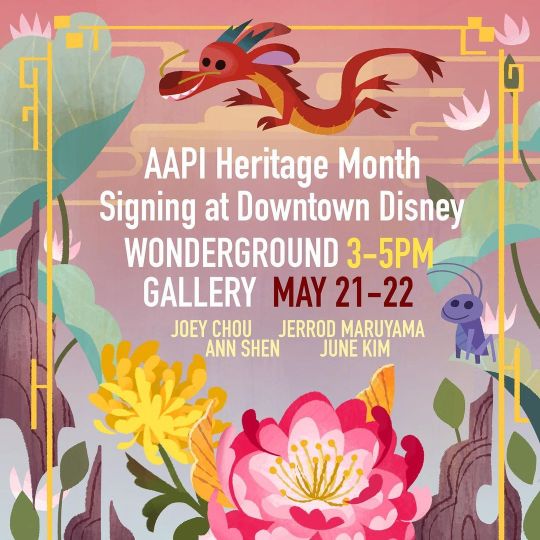
For #AAPIHeritage month. I’ll be doing signings at WonderGround Gallery with the super talented @jmaruyama @anndanger @hediun 5/21-5/22 from 3-5PM Stop by and say hi! #wondergroundgallery #joeychou #disney #disneyland @disneyland #downtowndisney #artistsoninstagram (at WonderGround Gallery) https://www.instagram.com/p/CdzPDlhpZG6/?igshid=NGJjMDIxMWI=
30 notes
·
View notes
Photo



As AAPI Heritage Month draws to a close, we're sending so much love to our incredible AAPI 𝘊𝘰-𝘊𝘩𝘢𝘪𝘳𝘴 — Bretman, Liza and H.E.R.
Each of you shine so bright, we gotta wear 🕶️s! Thank you for sharing your time, passion and energy with When We All Vote.
0 notes
Photo

“I joined the Asian Pacific American Network at Nationwide Children's because I wanted to get more involved and find people who share common interests with me. I thought joining this group would be a good opportunity to meet others who look like me and share common experiences. I hope that we can share Asian traditions and experiences with others.”
Katherine McMillan, Ambulatory RN, Pulmonary Clinic
1 note
·
View note
Photo
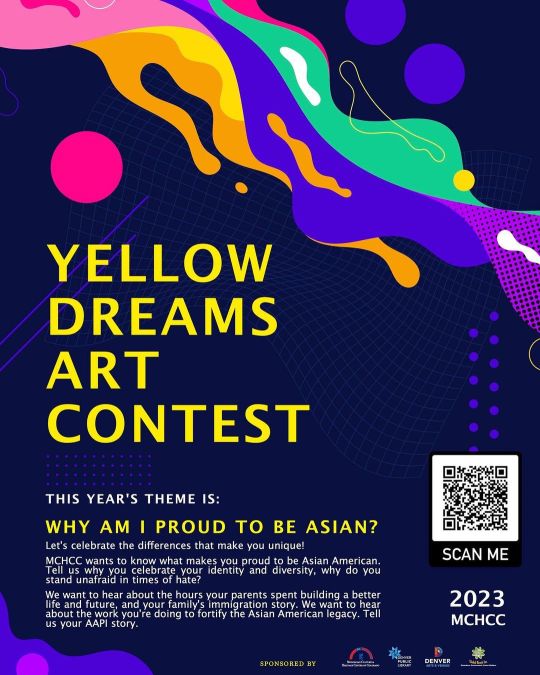
Shoutout to “Yellow Dreams Youth Art Contest” by the Mongolian Culture and Heritage Center of Colorado deadline April 15, 2023. http://www.mongolianchcc.org #yellowdreamsartcontest2023 #mchcc #mongolianculturecenter🇲🇳 #youthartcontest #aapi #aapiheritage https://www.instagram.com/p/CqVpU_sL69-/?igshid=NGJjMDIxMWI=
0 notes
Text


uswnt Celebrating #AAPIHeritage Month - Natasha Kai -
67 #USWNT caps
24 goals
2008 Olympic Gold Medalist
... and she celebrates a birthday today! Happy birthday, @natashakai6! 🎂
8 notes
·
View notes
Text
An Iconic Mural in the Heart of Historic Filipinotown

Photo credit: M. Rosalind Sagara
Named one of the top 20 iconic murals in Los Angeles by L.A. Weekly, “Gintong Kasaysayan, Gintong Pamana” (“A Glorious History, A Golden Legacy”) in Historic Filipinotown’s Unidad Park turned 25 years old last year. Commissioned by the Social and Public Art Resource Center (SPARC) and created by artist Eliseo Art Silva in 1995, the mural tells a story of the awakening of Filipino national and political consciousness, and pays tribute to Filipinos, both locally and nationally.
In May, the L.A. Conservancy’s Neighborhood Outreach Manager M. Rosalind Sagara interviewed artist Eliseo Art Silva about the mural, Historic Filipinotown, and how the two contribute to our growing understanding and appreciation of Asian American & Pacific Islander (AAPI) heritage in Los Angeles.
RS: What inspired Gintong Kasaysayan, Gintong Pamana?
ES: Chapter eight of Jose Rizal's novel Noli Me Tangere is titled "Recuerdos," and it depicts a scene wherein the main protagonist encounters a kind of inverted telescope which converges Europe and Manila in one scene. Rizal calls it "The Spectre of Comparisons": a charged space where nationalism, art, and the imagination emerge from. It was the kind of space I wanted to recreate in the expansive “Great Wall of Pilipinotown" so that ultimately, we can emerge both a Creative Economy and Ethnic Economy within the Filipino enclave of Los Angeles. At that time (1994-1995), the area was not yet designated as HiFi. Filipino leaders Uncle Roy Morales and Joel Jacinto have said that the Filipino mural was integral to the successful designation of the district as Historic Filipinotown.
RS: How does the mural fit in to the story of Historic Filipinotown?
ES: There were four murals in Filipinotown painted by Filipino Americans with a Filipino theme prior to “Gintong Kasaysayan,” and two more painted after, but only “Gintong Kasaysayan” has been preserved. Three of the murals were lost to demolition and the other three were painted over without protest or resistance. The other artists that painted Filipino murals within the neighborhood are Faustino Caigoy, Orlando Castillo, and Papo De Asis.
Since previous attempts to Filipinize Filipinotown were largely limited to Bahay Kubo ("Nipa Hut") aesthetics and the mentality it generates of minimizing the achievements of pre-colonial Philippines as a major player of The Filipino Story, “Gintong Kasaysayan” shifts the Filipino perspective. From one largely shaped by the Americanization movement, designed to rid the Philippines of Filipinos, to one that takes The Filipino Story as the main protagonist. It elevates Filipinos as a major player in America’s cultural landscape so our own Filipino community can earn and deserve that equal seat at the table of power and influence. Why have a seat at the table if all that we bring to the table is the stories of foreigners in our country told "on their behalf"?
What the “Gintong Kasaysayan” mural offers to the city is what the Filipino community can offer and why they deserve that equal seat at the table. What the mural provides is The Filipino Story. It challenges people to answer the question: What is "Filipino" in Historic Filipinotown?
At times, it aims to make people uncomfortable that they do not know enough about the story of Filipinos in this country and city, along with making Filipinos uncomfortable that they themselves do not take their own Filipino Story seriously enough to make it the main event in their own lives and humanity.

Festival of Philippine Arts and Culture, 2020
RS: Has the mural encountered challenges over its lifetime and how have these been addressed?
ES: Yes, many challenges have surfaced throughout the more than 25 years that the mural was in public view in that area of the city.
First of all, the Filipino community had not held an annual event in front of the mural until I initiated the Larry Itliong Day celebration in 2015 at Unidad Park. Because “Gintong Kasaysayan” was largely ignored by our own community for most of its two decades in the neighborhood, there were several instances when we almost lost the mural or the cultural integrity of the site.
When I moved to the East Coast in 2000 and lived there for 15 years, the mural came to a point when the residents around the mural wanted to cover the it with a 15-foot-tall fence to accommodate 25 community garden beds which would have obstructed the entire length of the wall. Had I not happened to visit the site while the meetings were being conducted, that community garden would have completely covered the entire length of the mural.
My personal protest produced the current mural signage for the public to recognize the significance of the mural and the site to the City of Los Angeles and the Filipino community. There was also a time when the neighborhood came close to erecting a life-size full figure monument honoring Bishop Romero at the center of the dap-ay space.
(Author’s note: The dap-ay is circular in form and intended to create a communal gathering space. It is a character-defining feature of Unidad Park and is believed to be the first of its kind outside of the Philippines.)
RS: What is your favorite part of the mural?
ES: The shifts in meaning. I like the parts intended to be ambiguous, challenging and uncomfortable.
RS: How do murals link the past to the present?
ES: I believe that murals are the best way to document communities. At its best, art and murals are not didactic, yet reveal core truths. I see murals as a kind of palimpsest intended to build upon previous stories and images which have ceased to be relevant, active and engaging.
RS: Do you have favorite mural in L.A.?
ES: América Tropical by David Siqueiros is my favorite mural in L.A
#aapi#aapiheritage#aapi heritage month#los angeles#los angeles history#Saving Places#historic preservation#public art
12 notes
·
View notes
Photo

Today we imagine ketchup as the ultimate modern American food (and it is true that we like to put ketchup on…well, a lot of things). But ketchup’s origins are found in Asia, and its adaptation *cough - appropriation into the thing that resembles our thick, modern-day ketchup began in early modern Britain. ⠀⠀ The word “ketchup” is borrowed either from the Chinese Fujian dialect (鲑汁 kôe-chiap, a brine of pickled fish or shellfish, with “kôe” as a kind of fish, and “chiap” as juice or sauce), and/or from Malay (with “kecap” or “kicap,” soy sauce). It’s likely that Britons encountered this tasty sauce – a thin, black-brown liquid that was either a type of fish sauce or a type of soy sauce – during acts of travel and colonization. ⠀⠀ In other words, ketchup wasn’t necessarily made with tomatoes, at least not at first. Back in the day, according to the Online Etymology Dictionary, the “most esteemed kinds” of ketchup were mushroom, walnut, and tomato, which emerged around 1800 in the U.S. and predominated from the early 20th century. ⠀⠀ Flavor, spice, and shelf-life were clearly important to early modern British ketchup-makers as they attempted to replicate the soy and fish sauces that had come to them via acts of travel, conquest, and colonization. But just as these Britons worked to use and enjoy Chinese and/or Malay sauces, they simultaneously adapted them, changing the recipes to suit their own tastes, needs, expectations, and palates. ⠀⠀ White Europeans appropriated, gleaned, bought, and stole knowledge and knowledge-systems from indigenous. You’re welcome. #aznsauceoflove . . . #hokkien #kecap #kicap #kecapmanis #originsofketchup #soysauce #asianlovelanguage #howasianparentsshowlove #asianfoodstory #asianpacificheritagemonth #aphm #aapiheritagemonth #aapi #aapi2020 #aapimonth #aapiheritage #asianaf #asianfoodie #cultureappropriation #asianmomsbelike #asiansauce #sauceinmyfridge #asiancreative #asianartist #wocartist #asianmoms #aaphm #immigrantsmakeamericagreat #bloodygirlgang (at Malaysia) https://www.instagram.com/p/CAIX1k6h6P4/?igshid=8oz3exfmrt1
#aznsauceoflove#hokkien#kecap#kicap#kecapmanis#originsofketchup#soysauce#asianlovelanguage#howasianparentsshowlove#asianfoodstory#asianpacificheritagemonth#aphm#aapiheritagemonth#aapi#aapi2020#aapimonth#aapiheritage#asianaf#asianfoodie#cultureappropriation#asianmomsbelike#asiansauce#sauceinmyfridge#asiancreative#asianartist#wocartist#asianmoms#aaphm#immigrantsmakeamericagreat#bloodygirlgang
1 note
·
View note
Photo
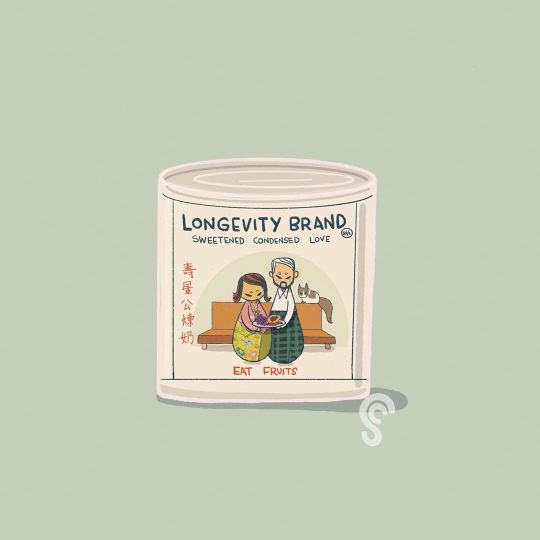
Love is shown with a big plate of cut up fruits after every meal in my family 🍉🍇🍊🍑🥭🍍🥝 I’ve been missing home and it was therapeutic drawing my traditional attire in this illustration. Sarongs are not just beach attire, it’s actually worn at home and also formal occasions for both men and women in perankan culture and other communities in South East Asia #notcrazyrichasians . #aznsauceoflove series for #aphm . . . #condenesedmilk #asianlovelanguage #howasianparentsshowlove #asianfoodstory #aapiheritagemonth #aapi #aapi2020 #aapimonth #peranakan #peranakanstyle #aapiheritage #asianaf #asianfoodie #asianmom #asianmomsbelike #asiansauce #sauceinmyfridge #asiancreative #asianartist #wocartist #asianmoms #sarongkebaya #proudperanakan #nyonyakebaya #apahm #byshawnachan (at San Francisco, California) https://www.instagram.com/p/CAVkrIvByzM/?igshid=tt3xt8frqsck
#notcrazyrichasians#aznsauceoflove#aphm#condenesedmilk#asianlovelanguage#howasianparentsshowlove#asianfoodstory#aapiheritagemonth#aapi#aapi2020#aapimonth#peranakan#peranakanstyle#aapiheritage#asianaf#asianfoodie#asianmom#asianmomsbelike#asiansauce#sauceinmyfridge#asiancreative#asianartist#wocartist#asianmoms#sarongkebaya#proudperanakan#nyonyakebaya#apahm#byshawnachan
1 note
·
View note
Text
I liked how he said my name. As if the syllables were the first notes to a song he loved to sing.
— Elizabeth Lim, Six Crimson Cranes
#six crimson cranes#elizabeth lim#quotes#literary quotes#literature#romance#fantasy#yafantasy#aapiheritage#writing#books#spilled ink#thoughts#lit#pretty quotes#quote of the day#reverie#reverie quotes#quote#book quote#book quotes#inspiring quote#inspiring quotes#beautiful quote#beautiful quotes
90 notes
·
View notes
Text

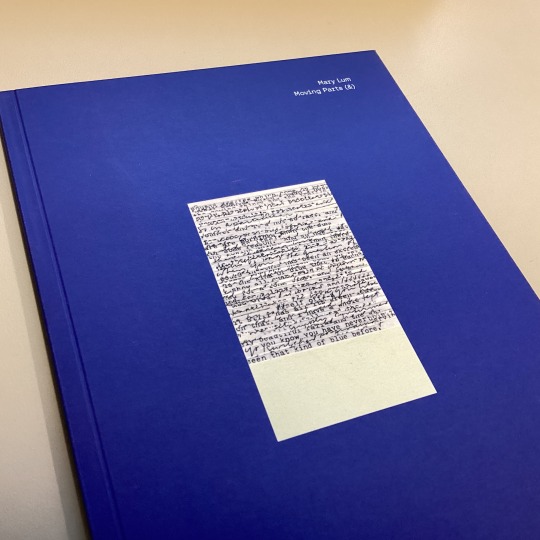
Celebrating Asian American and Pacific Islander Heritage Month this month!
Mary Lum’s exhibition catalog entitled “Moving Parts (&)” is in-library use only at the Schlesinger Library, but we wanted to include this catalog because Lum’s beautiful exhibition is up at Harvard Radcliffe Institute through June 24th. We encourage you to visit her exhibition while it’s up!
For this exhibition, Mary Lum has created an artist’s book and installation featuring photographs of temporary constructions made from a palette of broken vintage letterforms. The exhibition catalog is also gorgeous.
Mary Lum : moving parts (&)
Cambridge, MA : Harvard Radcliffe Institute for Advanced Study, [2023]
HOLLIS number: 99156684077103941
*Schlesinger Library In-library use only
Ghost forest
Lin, Maya, 1959- [artist, interviewee}
New York : Madison Square Park Conservancy, [2021]
HOLLIS number: 99156668641703941
Zarina : paper like skin
Los Angeles: Hammer Museum, University of California; Munich: DelMonico Books/Prestel, 2012
HOLLIS number: 990137311030203941
Ray Yoshida's Museum of Extraordinary Values
Sheboygan, Wisconsin : John Michael Kohler Arts Center, [2013]
HOLLIS number: 990139821660203941
Maya Lin : here and there
New York : Pace, [2013]
HOLLIS number: 990137085350203941
Tsherin Sherpa : spirits
Richmond, Virginia : Virginia Museum of Fine Arts, [2022]
HOLLIS number: 99156624177103941
Ruth Asawa : citizen of the universe
London : Thames & Hudson Ltd ; New York, New York : Thames & Hudson Inc., 2022.
HOLLIS number: 99156425913103941
Zhang Huan : altered states
New York : Asia Society ; Milano : Charta, 2007.
HOLLIS number: 990108885030203941
Do Ho Suh : works on paper : at STPI
Singapore : STPI Creative Workshop & Gallery ; New York : DelMonico Books/D.A.P., 2021.
HOLLIS number: 99155779049803941
#AsianAmericanandPacificIslanderHeritageMonth#AAPIHeritageMonth#AAPIHeritage#AAPI#MaryLum#HarvardFineArtsLibrary#Fineartslibrary#Harvard#HarvardLibrary#harvardfineartslibrary#fineartslibrary#harvard#harvard library#harvardfineartslib#harvardlibrary
14 notes
·
View notes
Photo
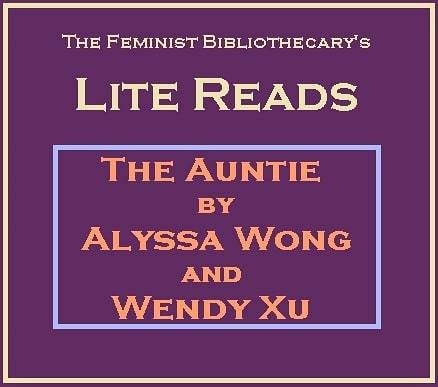
Our new Lite Reads selection is The Auntie by Alyssa Wong and Wendy Xu! This short comic (our second comic for Lite Reads) has elements of comedy and horror as it tells the story of a young woman and the ghost that is haunting her. You can find a link to this Asian Heritage Month selection in my full intro post, linked below. Give the story a read and be sure to let me know what you think in the comments! https://wp.me/p9KSXu-vx #litereads #shortstories #shortstory #reading #shortstoryclub #ghoststories #comics #shortcomics #shortcomic #asianheritagemonth #aapi #aapiheritage #ahm #aapihm #aapiheritagemonth https://www.instagram.com/p/B_zCI5zgY7z/?igshid=1xjiivdt9705p
#litereads#shortstories#shortstory#reading#shortstoryclub#ghoststories#comics#shortcomics#shortcomic#asianheritagemonth#aapi#aapiheritage#ahm#aapihm#aapiheritagemonth
0 notes
Photo
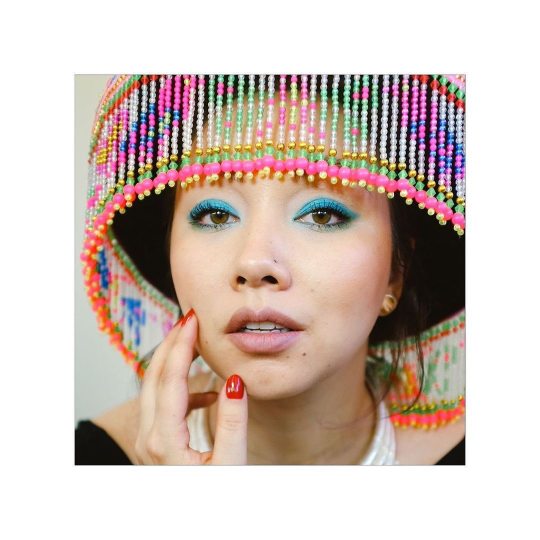
June is also #ImmigrantHeritageMonth! love this story from @katherinekellis #repost: PART 1/3: #AAPIHeritageMonth In true Katherine fashion, I waited until the last day of the month, but it was important to me to share this piece of myself. . . . . . . . #AAPI #AAPIheritage #Hmong #mixedrace #hapa #wcw https://www.instagram.com/p/CPn2SeRl37S/?utm_medium=tumblr
1 note
·
View note
Photo

"Fostering a sense of belonging and community was important to me when I made the move to Columbus. As an international student and a fresh graduate out of college who moved to a brand-new city, I was seeking for the familiar amidst the unfamiliar and that’s when I discovered the Asian Pacific American Network at Nationwide Children's.”
Vishaka Kalra, Research Associate, Center for Injury Research & Policy
0 notes
Text
RT @TheTinaVasquez: NEW: As part of @ourprisms' #AAPIHeritage series curated by our wonderful senior editor @GeekMelange, I had the great pleasure of once again interviewing Homer Yasui, a 96-year-old survivor of Japanese internment. Check it out: https://t.co/VUy5zZY7OA
NEW: As part of @ourprisms' #AAPIHeritage series curated by our wonderful senior editor @GeekMelange, I had the great pleasure of once again interviewing Homer Yasui, a 96-year-old survivor of Japanese internment. Check it out: https://t.co/VUy5zZY7OA
— Tina Vasquez (@TheTinaVasquez) May 21, 2020
via Twitter https://twitter.com/ronnychieng
May 22, 2020 at 07:59AM
0 notes